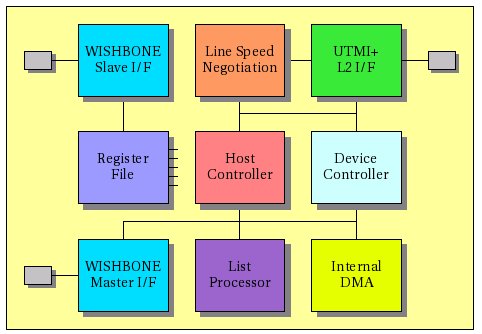- True Dual-Role capability
- OTG high performance host mode
- UTMI+ L2 Interface, ULPI wrapper and FS only transceiver interface available
- Full USB peripheral support
- Session request protocol support
- Host negotiation protocol support
- High, Full and Low Speed mode support
- Up to 16 endpoints
- Bulk, interrupt and isochronous transfers
- Slave and Master System Interface:
- AVALON
- AHB
- OCP
- OPB
- PLB
- WISHBONE
- Customer specified bus interface
- No dedicated local memory required
- Compact and cost-effective solution for SoC
|
 |

